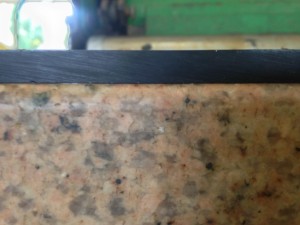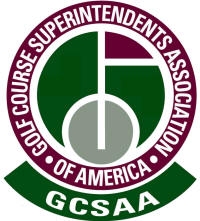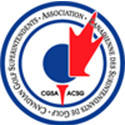The Truth About Height of Cut
Last month I read some really interesting posts about calibrating height of cut gauges and people wondering how you know if your height of cut setting is correct. What is interesting is that the reason they were asking was because they purchased the IGCEMA RHOC gauge and there was a huge difference in what their standard gauge was reading vs the RHOC.
First off when you calibrate your height of cut gauge it’s not as simple as just sticking some keystock under the dial indicator and measuring it with calipers. It is true that you can check your dial indicator using that method but not your height of cut gauge. The mistake that is being made is that height of cut is determined by the complete length of the bar at the points each roller touches the gauge. The dial indicator is then pushed up to determine height. So if your bar is bent in the middle “like most are” then your height of cut is not correct. The true way to check your gauge is to put the bar itself on a surface plate and see if you can see daylight underneath it. This will tell you if it is off. You can then take feeler gauge and slide under it to determine the amount the gauge is off.
The truth is that when we are talking about typical single bar height of cut gauges very rarely are 2 exactly the same. Initial reports from users of the RHOC gauge were that some gauge were over .030 deviation from the RHOC. The thing to understand is that this is why we built the gauge! It was not built because we felt that the industry needed another tool. It was because we were addressing a problem that was long overdue to be addressed. The unfortunate part about our industry is as we become more sophisticated as technicians and learn more about what we are doing we are finding flaws in machines and tools that quite simply have been neglected.
I also read posts where statements were made that height of cut doesn’t matter stimp meters and clipping yield do. I really only have one thing to say about that clipping yield is variable based on correct bedknife top angles, grass shield settings and reel RPM. If it is not the same setting on each machine it will differ and as far as the stimp meter goes consistency is what matters when cutting turf at low heights of cut. If you can’t get the same height of cut readings from your height of cut gauge you can’t expect to have consistent stimp meter readings.
The IGCEMA RHOC gauge will be the only gauge I use in the future and not because the IGCEMA makes it but because I have 3 and no matter which one I use I get the same reading everytime. The take home message is that just because the guy down the street says he is mowing at .090 doesn’t mean its accurate.
To order the RHOC: IGCEMA Pro Shop
You might also like
Budgeting – Where’s All the Money Going?
The infamous question that gets asked time and time again. Where does the money go in golf course maintenance? The better question is are we prepared when the question comes?
Preventive Maintenance Program Completed
My Preventive Maintenance Program is finally completed. Well I have been here for over 6 months now certainly with plenty of things to get accomplished. The biggest of those is
Preventive Maintenance and Toro’s My Turf System
When I attended college at Lake City Community College (Florida Gateway College now) in 1998 we were heavily pushed to understand the effects of doing preventive maintenance. During that time

















2 Comments
b.j.
August 09, 15:49good article stephen: well written and to the point.
b
Bob Pruneau
August 10, 10:49Great reading Steve.